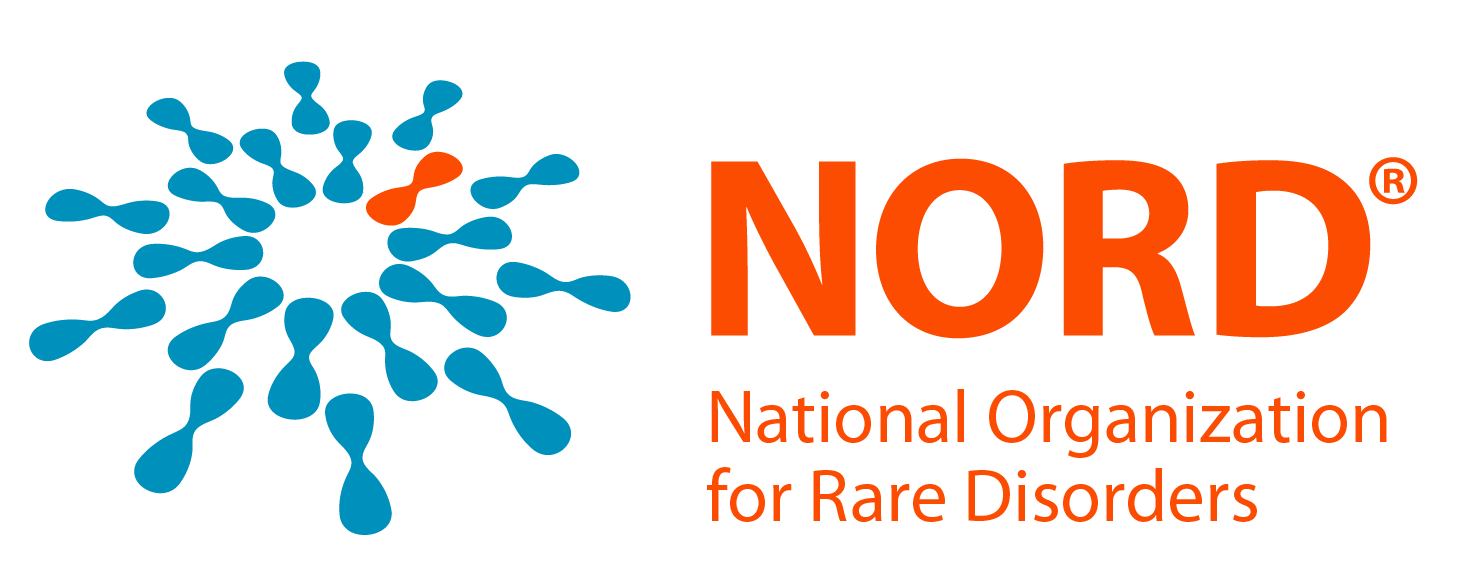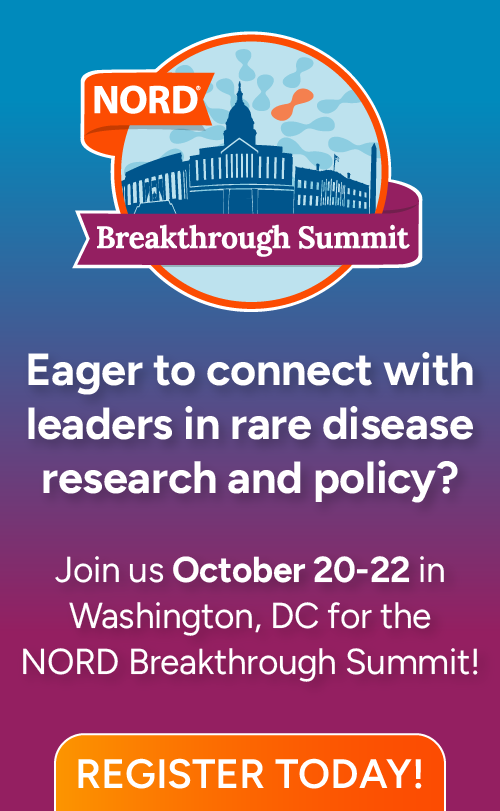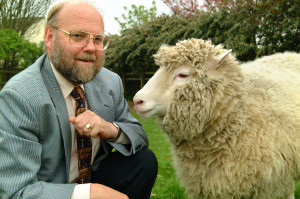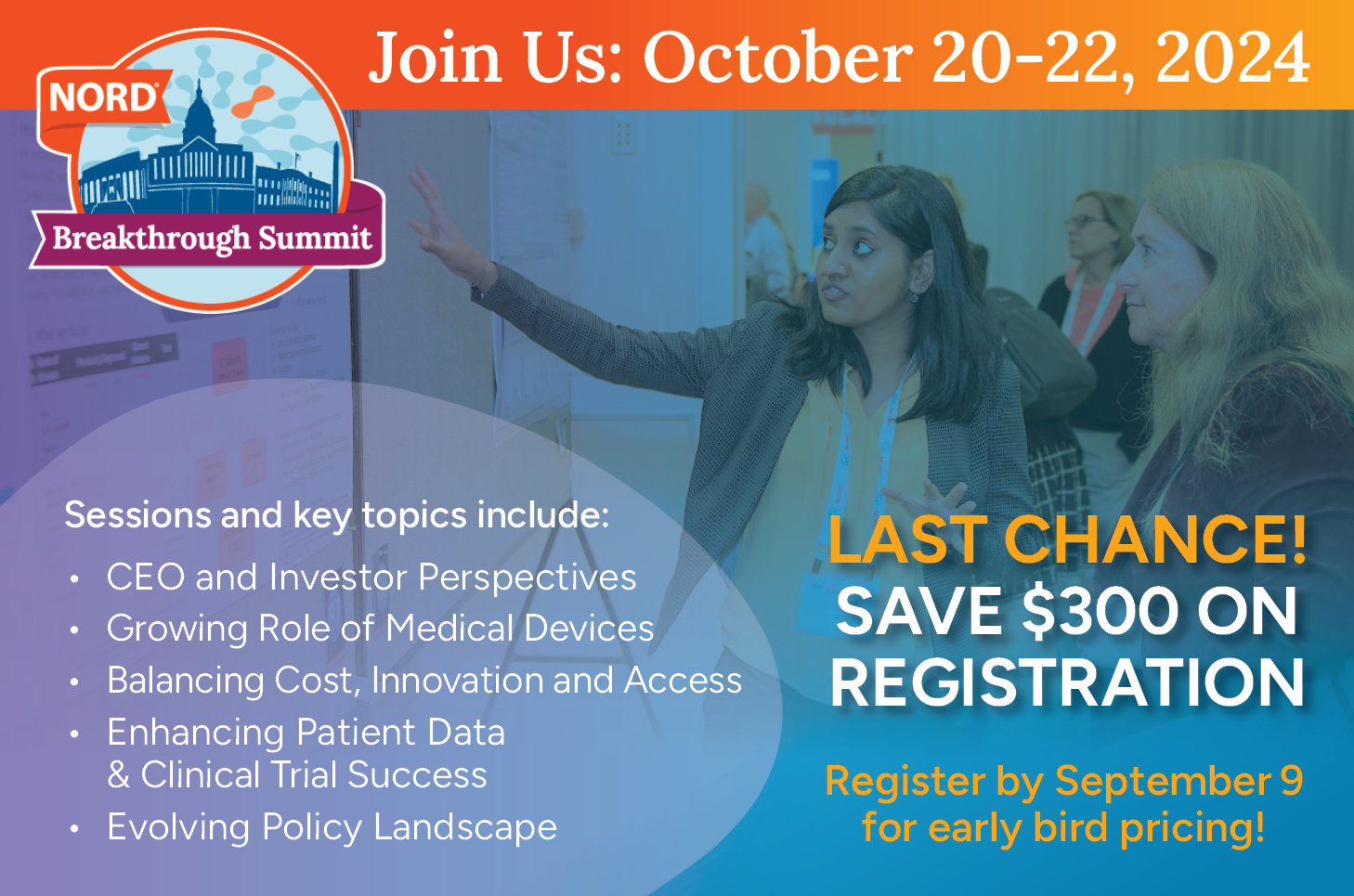2018 is a big year for the rare disease community – NORD is celebrating its 35th anniversary. For the past 35 years, NORD has taken pride in being the rare disease community’s biggest advocate. Our policy, research and other efforts have played a significant role over the years, advocating for what matters most and making sure patients have a voice. In this special anniversary blog series, we are highlighting our decades of service to those impacted by rare diseases.
Throughout the year, we’ll be telling our story… and we hope you will consider telling yours. Do you have a story you would like to share about how NORD has helped and what NORD means to you? Tell us – send us a note using this page on our website: https://rarediseases.org/shareyourstory/. Your story may be chosen to appear on our website or as part of our special anniversary celebration.
Ten years after its founding, NORD had evolved from a grassroots coalition of rare disease advocates, who played a key role in the passage of the Orphan Drug Act, to a leading American charity that was blazing the path to help promote orphan drug programs throughout the world, working closely with health-related industries, rare disease consumer groups, the research community, and government.
In 1990, as the Orphan Drug Act was helping to bring new treatments to market, rare disease patients had even more reason to have hope when Congress created the Humanitarian Device Exemption (HDE) pathway to encourage the development of and facilitate access to medical devices for the treatment of rare conditions and diseases.
The year 1990 also saw the launch of the first human clinical trial of gene therapy. The trial was conducted by Dr. W. French Anderson and colleagues at the National Institutes of Health (NIH), with a young girl who had a rare disease known as Severe Combined Immune Deficiency (SCID-ADA). Dr. Anderson was one of the first scientists who believed that gene technology could be developed and eventually treat or cure human diseases. He pioneered the effort when most scientists believed it was speculative. Within a few years, there were more than 100 NIH-approved clinical trials of human gene therapy. In 1994, Dr. Anderson was honored for his pioneering efforts to help rare diseases patients at NORD’s annual tribute ceremony.
Around the same time, in 1993, the Human Genome Project began. The 15-year project was directed at mapping and sequencing all of the human genes. It was conducted under the leadership of Dr. Francis S. Collins, who had been appointed as Director of the National Center for Human Genome Research at the NIH. Dr. Collins and his team laid the foundation so that researchers around the globe could collaborate on a wide range of projects using genomic tools and technologies to expand understanding of human biology and combat human disease. NORD recognized Dr. Collins for his work at its 1995 tribute ceremony.
As science and technology continued to progress, NORD built resources to help facilitate types of communication between patients and other stakeholders. As the internet took hold, NORD launched its first website. By 1996, NORD had completed the transition of its Rare Disease Database online. The database contained more than 1,050 entries and served as the only comprehensive, up-to-date medical database written for the public in easy to understand language.
By the time NORD turned 15 years old in 1998, the organization was answering more than one million inquiries each year from patients, health care workers, scientists, companies and the general public, including more than 700,000 through its website and another 300,000 by phone, mail, and fax.
That year also saw the launch of NORD’s Medical Equipment Exchange, a free, user-friendly, consumer database of used medical equipment that NORD developed with the goal of helping to increase access to necessary medical equipment for those who could not afford to purchase the items.
 At the same time, the world became captivated by the cloning of Dolly the sheep—the first mammal to be cloned from an adult cell, which sparked a debate on the ethics and safety of human cloning. NORD’s then-president, Abbey Meyers, was called to testify before the House Commerce Committee’s Subcommittee on Health and Environment regarding proposed legislation to ban human cloning experiments, and its potential impact on biomedical research related to treatments for rare disorders. NORD, the scientific community, patient organizations, and academic institutions agreed that the end result of any regulation or new anti-cloning law should be limited to preventing cloning of the entire human being and not a broad ban the technology of somatic cell nuclear transfer that had the potential, through the cloning of molecules, genes, cells and tissues, to bring about cures or treatments for painful or debilitating human diseases. Ultimately, NORD and others who advocated on this side of the bill prevailed.
At the same time, the world became captivated by the cloning of Dolly the sheep—the first mammal to be cloned from an adult cell, which sparked a debate on the ethics and safety of human cloning. NORD’s then-president, Abbey Meyers, was called to testify before the House Commerce Committee’s Subcommittee on Health and Environment regarding proposed legislation to ban human cloning experiments, and its potential impact on biomedical research related to treatments for rare disorders. NORD, the scientific community, patient organizations, and academic institutions agreed that the end result of any regulation or new anti-cloning law should be limited to preventing cloning of the entire human being and not a broad ban the technology of somatic cell nuclear transfer that had the potential, through the cloning of molecules, genes, cells and tissues, to bring about cures or treatments for painful or debilitating human diseases. Ultimately, NORD and others who advocated on this side of the bill prevailed.
In 2000, NORD began the new millennium by launching yet another new program: a Corporate Council. With an initial group of 10 members, the Council offered another way to bring together the rare disease community to increase collaboration.
On the legislative front, NORD staff continued to work closely with government on issues of concern to the rare disease community. When, in 2000, the publicly financed Human Genome Project, along with the privately financed company Celera Genomics, jointly announced that they had successfully mapped more than 95 percent of the human genetic code, NORD issued a policy statement articulating that the code for the human genome should not be patented, and that information regarding the human genetic code should be freely available to all scientists to allow for the unimpeded and creative development of new and better treatments for diseases.
The Rare Diseases Act of 2001, introduced by Senators Edward Kennedy (D-MA) and Orrin Hatch (R-UT) with strong support from NORD, provided enhanced support for FDA-funded orphan drug research grants, along with increased funding and permanent status for the Office of Rare Diseases at NIH. This legislation marked another success for rare disease patients.
Later that year, as the anthrax scare unfolded during the autumn of 2001 and as the nation was reeling from the events of September 11th, NORD launched a public education campaign with information about bioterrorism diseases posted on its website for the public. As the future held uncertainty on many levels, and donations to nonprofits dipped nationwide, NORD recognized that the needs of the rare disease community would never go away. These and other activities in 2001 reflected the fact that NORD ”stayed the course” during a time of national turmoil and diminished public support for nonprofits.
 In its December 2001 cover story, Worth magazine honored NORD as one of “America’s 100 Best Charities,” selected on the basis of the ability to stretch each donated dollar, converting each charitable gift into effective programs and services that benefit the public. In 2002, for the second consecutive year, NORD earned the honor once again.
In its December 2001 cover story, Worth magazine honored NORD as one of “America’s 100 Best Charities,” selected on the basis of the ability to stretch each donated dollar, converting each charitable gift into effective programs and services that benefit the public. In 2002, for the second consecutive year, NORD earned the honor once again.
During the early 2000s, NORD became increasingly involved in raising awareness of rare diseases among physicians and other medical professionals. NORD’s publications at the time included The NORD Guide to Rare Disorders, a 900-page medical text for physicians published by Lippincott, Williams & Wilkins; the NORD Resource Guide, a printed version of the Organizational Database; the Orphan Disease Update and NORD Online newsletter, and The Physician’s Guide series of booklets, distributed free to medical professionals to enhance awareness of rare disorders. The intent of these resources was to help patients obtain earlier diagnoses and speedy referral to appropriate sources of assistance.
At the same time, NORD continued to play a vital, prominent role in Washington, D.C., addressing public policy issues on behalf of families with rare diseases, particularly when government programs and policies did not adequately address their needs. In 2003, NORD’s advocacy helped make possible the establishment, by the NIH, of a Rare Diseases Clinical Research Network with $51 million in grant funding over five years. The program enabled collaborative, trans-NIH clinical research on causes, prevention, outcomes, and treatments of rare diseases. NORD also advocated for the Pediatric Research Equity Act of 2003, federal legislation that has had immeasurable benefit for individuals and families. The year 2003 also marked the successful completion of the Human Genome Project.
In 2005, NORD provided advocacy on important issues related to reimbursement, patient access to orphan products, genetic testing, newborn screening, and the new Medicare prescription drug benefit. NORD supported the Reconstructive Surgery Act of 2005, a bill to require insurance coverage for medically necessary surgery that is sometimes unfairly categorized as cosmetic surgery. It also supported a bill to phase out a mandatory 2-year waiting period before Americans with disabilities could obtain Medicare.
In 2008, NORD’s founder and president, Abbey S. Meyers, retired after 25 years of service. The Board of Directors named Peter L. Saltonstall as president and CEO. The year also marked the beginning of several new programs including NORD’s charity marathon team, Running for Rare, which raises awareness and funds to help rare disease patients; the NIH Undiagnosed Diseases Program, a research study to improve and accelerate diagnosis of rare and undiagnosed conditions; and Rare Disease Day®, a worldwide awareness day and campaign for all rare diseases, which was established in Europe by EURORDIS, Europe’s rare disease umbrella organization and NORD’s sister organization.
One year later, NORD partnered with EURORDIS and the international community to serve as the official U.S. host of Rare Disease Day, bringing the campaign to the U.S. for the very first time. NORD is honored to have served as the U.S. host ever since, helping to grow the campaign and involve more people in rare disease awareness. Moreover, NORD and EURORDIS entered into a partnership that has played a crucial role worldwide in increasing recognition of rare disorders and that has sought to minimize their impact on the lives of patient and families.
That year, NORD also opened its Washington, D.C. office, which provides a home base for staff to use between frequent trips to nearby Capitol Hill for meetings with legislators to advocate for issues of importance to rare disease patients.
Over the years, there continued to be a serious shortage of funding for clinical research on orphan diseases. NORD helped to fill this void by providing seed grants to academic scientists for research on potential new treatments for rare disorders, advocating for increased government research funds, and referring affected individuals to clinical trials and genetic investigations. NORD’s funding and advocacy have enabled researchers to develop breakthrough treatments that have dramatically improved the length and quality of life for thousands of children and adults with rare disorders.
Stay tuned for the next post in NORD’s 35th Anniversary series. Anniversaries help us focus on what has been accomplished, and what still remains to be done. The needs of rare disease patients and families are many and complex. With your continued support, NORD will be able to meet those needs for many years to come.




